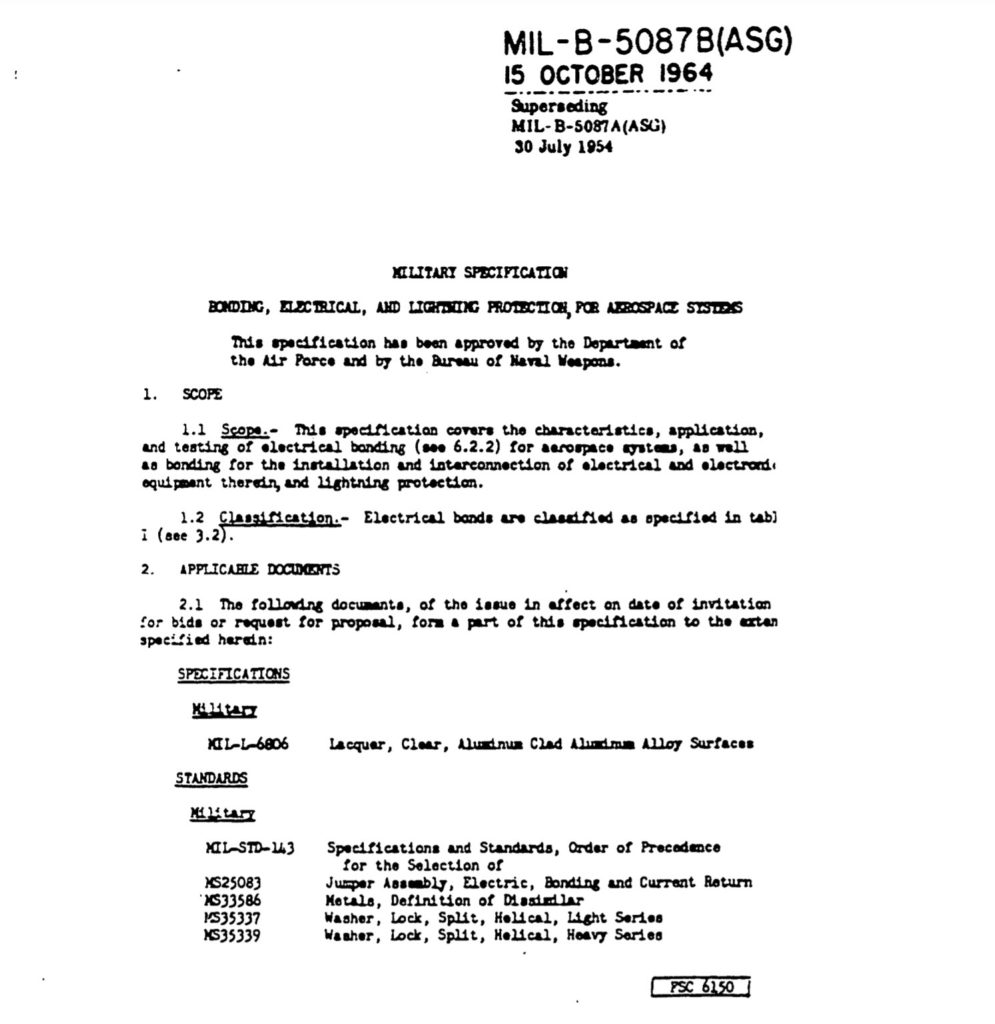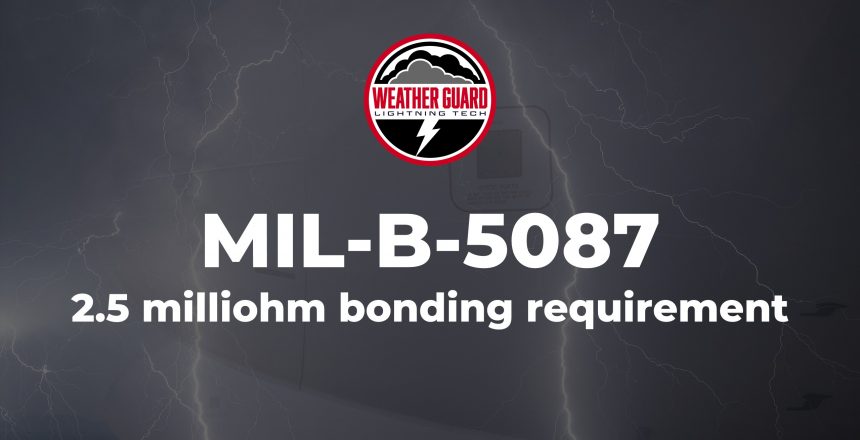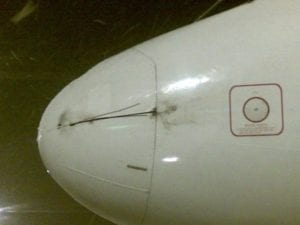The MIL-B-5087 document established the 2.5 milliohm bonding requirement. In this overview, learn everything you need to know so that your aircraft is outfitted with compliant lightning protection. Find more aircraft lightning strike protection resources, and download the full PDF document at the bottom of this page.
MIL-B-5087: An Important Historical Aircraft Lightning Strike Protection Document
Many aspects of lightning protection revolve around electrical bonding requirements and keeping electrical joint resistances low. In MIL-B-5087 the 2.5 milliohm bonding requirement is enshrined.
The 2.5 milliohm requirement for lightning protection is derived by limiting the maximum voltage in the aircraft at 500 volts and defining the maximum current at 200,000 amperes (500 volts / 200,000 amperes = 2.5 milliohms). Here is the relevant paragraph from MIL-B-5087B:
The following bonding requirements are designed to achieve protection against lightning discharge current carried between the extremities of an airborne vehicle without risk of damaging flight controls or producing sparking or voltages within the vehicle in excess of 500 volts. These requirements are based upon a lightning current waveform of 200,000 amperes peak, a width of 5 to 10 microseconds at the 90-percent point, not less than 20 microseconds width at the 50-percent point, and a rate of rise of at least 100,000 amperes per microsecond.
This document also contains very useful bonding examples that are still used across the aerospace industry.

You can download the full PDF copy of the historical MIL-B-5087 document below.
For more lightning protection guidance material, summaries and tutorials, check out the handy links below.
Aircraft Lightning Strike Protection Resources

- SAE ARP Lightning Guidance Material: What You Need to Know
- In this article, we discuss SAE ARP 5414B, 5412B and 5416A, which are crucial documents that every radome design engineer needs in their library
- SAE ARP Guidance Material Explained [Podcast]
- In this episode of the Struck Aerospace Engineering Podcast, FAA DER Allen Hall discusses the SAE ARP documents and explains what’s contained in each and why they’re important.
- FAA 14 CFR 25.581: The Guide to Compliance
- This article contains an accompanying video presentation that walks radome engineers through compliance with FAA 14 CFR 25.581, giving examples and steps to meeting the requirements.
- The Weather Guard Help Doc Center
- Visit our archive of historical lightning protection documents, crash reports, and articles on compliance, regulations and more.
At Weather Guard, we’ve got 20+ years of experience in lightning protection, and we’re here to be your aircraft lightning strike protection resource. The aerospace industry continues to raise the bar on aircraft safety, and it’s our mission to do our part in keeping air travel safe.
MIL-B-5087 & Bonding FAQ
The mil-b-5087 document was incredibly important in establishing aircraft safety standards for electrical systems and lightning protection. Air travel today is the safest it has ever been, and we owe much of that to the unfortunate work of crash investigators and engineers who helped create better standards after catastrophic aircraft failures.









